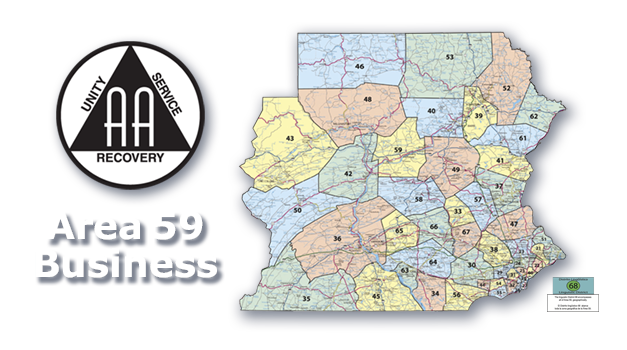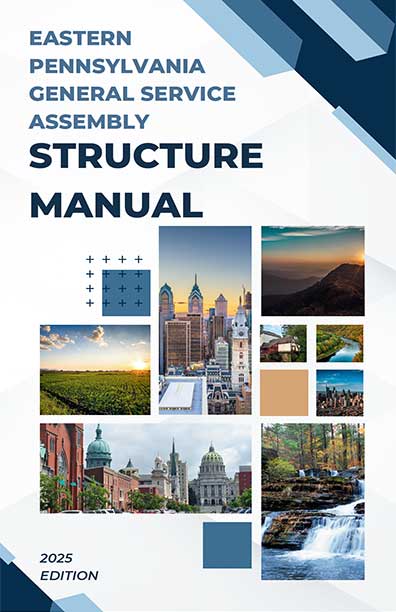
Structure Committee
About our Committee
Structure addresses matters of Area structure referred by the Area Committee; explores ways in which continuity and communication between the various service entities in Eastern Pennsylvania might be improved, such as coordinating DCM workshops and, when necessary, updating the Area 59 Structure Manual and area map indicating district boundaries.
Please feel free to email the Area 59 Structure Committee with any questions or concerns you may have regarding A.A. Structure.
A District Structure Manual — What, Why, and How
When referring to a structure manual, it’s easiest to think of it as the framework around which your District is organized and what keeps it functioning. A structure manual is a kind of operating manual that outlines procedures that have become traditional as well as effective ways in which the business of the district is conducted. It describes various service roles, how members are chosen to fulfill those roles, and how decisions are made. It provides an orientation to local service work within the district. It is an essential tool that conveys best practices and standards that have come from district experience.
A structure manual should adhere to the principles and traditions of Alcoholics Anonymous. It should provide guidelines about general service within Area 59, and give identity to the specific District. The EPGSA Area Structure Manual is an excellent resource for anyone who is creating or modifying a district manual. Many districts choose to “mirror” its outline.
A suggested method for creating/modifying a structure manual:
- Form a small committee of interested persons, preferably with knowledge of AA literature and English composition. Knowledge of the AA service manual is beneficial.
- Review manuals from other districts, as well as the EPGSA Area Structure Manual to get an idea of a format that would work best for your district.
- Create the format (a Table of Contents outline may be helpful) including a District Business Meeting Agenda template (one already being used and acceptable.)
- Include a simple parliamentary process. The GSC Conference Procedure chart and AA’s Voting Procedure flow chart have been included in this packet.
- Add a description of the GSR and District Officers roles and duties. Highlight the terms of eligibility for the roles (length of sobriety, etc.) as well as the intended term length.
- Consider any subcommittees the district would like to incorporate, possibly including, but not limited to, Visitation, Bridging the Gap, or Archives
- Define a process for replacing officers in case there is a vacancy due to resignation or other reason.
- Consider adding a process to review and edit your district structure manual. It is advised to review them each panel.
- Share any of the district manual committee’s progress with GSR’s on a regular basis, asking for feedback as work continues. Give plenty of time for the final draft to be read and shared with home groups prior to formal adoption of the manual.
- As work progresses, be mindful of our Three Legacies, and ask for each component of the manual, “Are we following the spirit of Recovery, Unity, and Service in the way we draft this?”
- It is suggested to have a means of communication throughout your district outlined.
- Call on resources that are available to you, whether they be Area Officers (present or past), members of the Area Structure Committee or fellow DCM’s and GSR’s. We are not alone in anything we do here.


